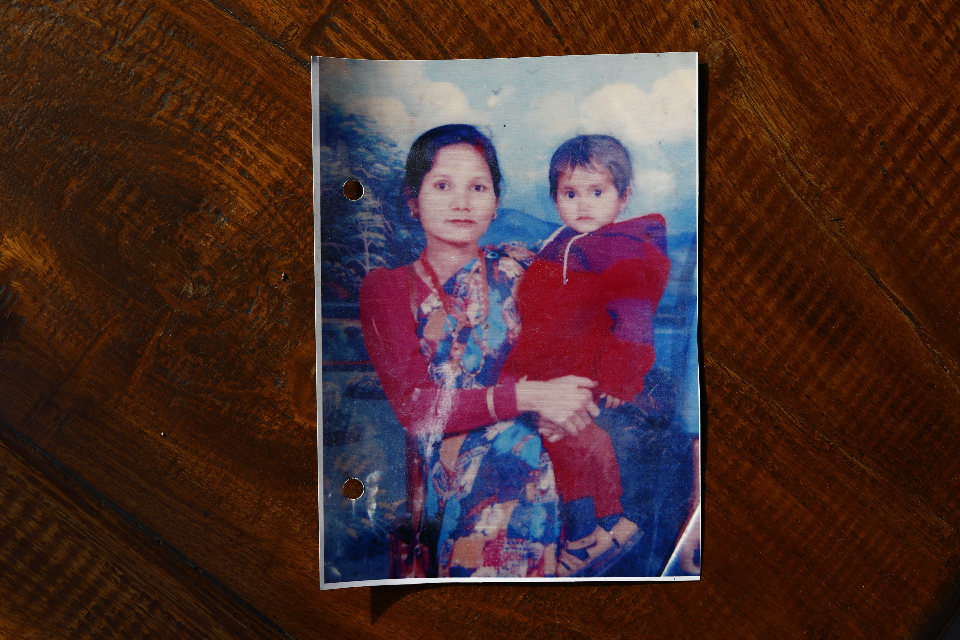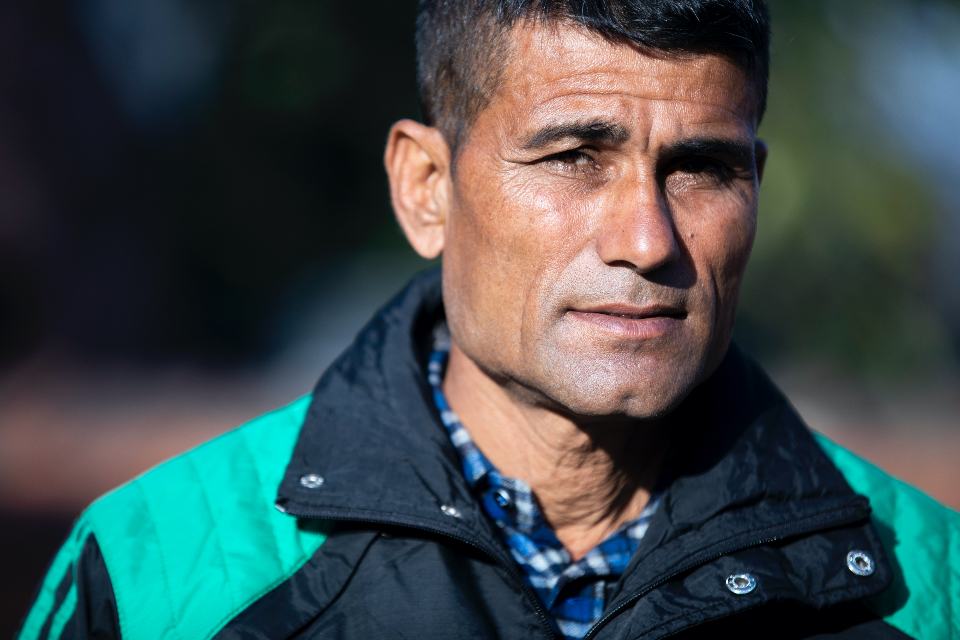The scars of war

It was exactly 20 years ago that Rabina Regmi and her brother Rabin were travelling with their parents when their bus was attacked with petrol bombs by Maoists along the East-West Highway in Sarlahi.
As the fire spread, the driver lost control and the bus toppled over into a ditch. Rabina, aged 5 and Rabin, 3, and their mother, Anju, were the last to be rescued.
All three suffered severe burns, and a video taken at the time shows the two children huddled around their mother, crying and in shock.
Anju died after two weeks of pain and agony in a hospital in Raxaul. Rabina had burns all over her face, her hands and stomach. Rabin had burns on his face, a gash on his head, deep cut on his leg and his left hand was broken. Two other passengers also lost their lives in the attack.
Read also: Rabin and Rabina, Nepali Times




After Nepali Times reporter Naresh Newar’s story appeared in this newspaper in 2002 (left), the tragedy came to represent the face of a meaningless war, and there was an outpouring of support from readers. Sushma Koirala Memorial Hospital offered reconstructive surgery to the children, and Bright Horizon Children’s Home and School took responsibility for their education till college.
“Telling their story was important because there wasn’t enough coverage on how the war was affecting children,” says Naresh Newar. “The Maoist were attacking public spaces without regards to who may be affected from their actions, this story showed the victim’s side of story.”
Newar followed up with the family numerous times and is grateful for the positive impact it had for the family. The last time he met them, the siblings were happily settled in at the school.
The Regmi family's tragedy and ordeal was depicted in A People War, a photo book trilogy curated by Kunda Dixit and featured in Kesang Tseten and Prem BK's documentary Frames of War (clip, above).
Now aged 25 and 23, Rabina and Rabin still bear scars from the tragedy, but are determined to not let their past hold them back. Rabina is a final year BBA student at Global College of Management and wants to get into banking. Rabin is doing his BSc in Agriculture from Chandigarh University. After the campus closed last year due to the pandemic, he in Kathmandu attending online classes.
Read also: Why the children?, Naresh Newar


Their father Bhakta Bahadur Regmi is a forest ranger stationed in Hetauda, the same job he had 20 years ago. He is grateful for all the help his children have got over the years from the school, hospital, and others, but says it has been two decades of struggle without their mother.
There has been no help from the state. “Everywhere we go, they ask for identification cards proving that we are conflict victims. But we don’t have any papers to prove that,” he says. Even today, he carries a folder of newspaper cuttings and old medical records of his children.

The Truth and Reconciliation Commission was mandated to provide identification cards to conflict survivors, and inform them about investigations into war crimes. But without political connections, and no time to scour many government offices, Bhakta Bahadur and his family have been left to fend for themselves. The attackers were never identified and did not have to answer for their crime.
For the past 20 years, Rabina and Rabin have needed numerous operations to heal their wounds, including reconstructive and orthopedic surgery, laser treatment, even hair transplant. The fees for surgeries are waived or subsidised, but the cost of travel, medicines and hospital stay add up.
Read also: New life, Naresh Newar

In 2015, when Rabina was getting another of her laser treatments for burn scars, the Indian blockade led to a shortage of medicines. “The doctors had to perform the procedure without anesthesia and it was very painful,” recalls Bhakta Bahadur. Later, her wounds got infected and she had to get it treated again. Rabin has not had laser surgery due to financial constraints.
Read also: Post-conflict stress syndrome, Taylor Caldwell

At Bright Horizon, the siblings aced their studies. Rabin passed his SEE with a GPA of 3.85, the highest from his batch. Rabina was also a good student, and the school is still helping them with college fees, while their father struggles to cover other costs.
The first year Rabina was at the boarding school, she ran away. “I did not know anyone there and I missed home,” she says. “But later, it became our home. Both of us made life-long friends there.”

Bhakta Bahadur describes Rabina as the calm one. Rabin on the other hand was a mischievous little boy. He says, “Both of them felt at home at Bright Horizon, when I went to pick them up during holidays, they’d refuse to come home saying their mother wasn’t there.”
Read also: Rabina and Rabin in hospital, Naresh Newar
At school, Rabina made it a point to look out for her brother. Every time Rabin got into fights with his friends, his elder sister would come to his rescue. Today, the two share their hopes and dreams, supporting each other and hope to take care of their father who has sacrificed all to raise them.
Weary of the country’s situation, Rabina now wants to go abroad for her MBA. Rabin wants to complete his MSc and then try for the civil exams. “The two of us came to the conclusion that one of us should go abroad and the other should stay back,” says Rabin. “We have seen how much difference having a family member abroad makes for the economic wellbeing of families.”
Read also: Rs 199,349 for Rabina and Rabin Regmi, Nepali Times

Having brought up the children on his own, Bhakta Bahadur still worries about their future. But he is happy the two have become responsible young adults ready to take charge of their own lives.
Rabina says with determination, “We have had to depend on our father for so long. Now, we want to look after him, and our family.”
Read also:
Remembering hell, Nepali Times
Burning in the aftermath, Sahina Shrestha
writer
Sahina Shrestha is a journalist interested in digital storytelling, product management, and audience development and engagement. She covers culture, heritage, and social justice. She has a Masters in Journalism from New York University.




